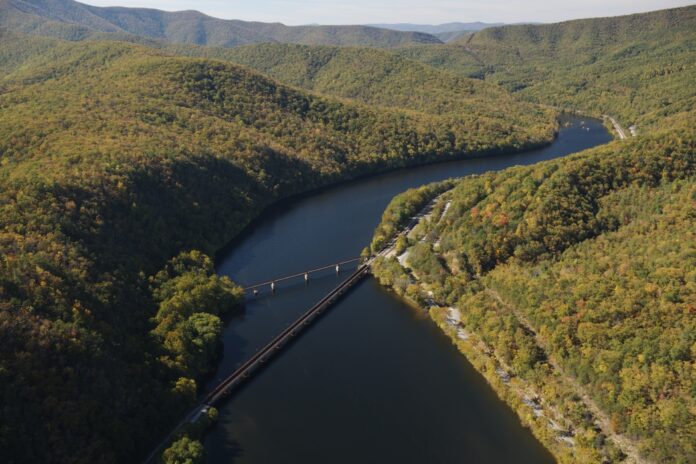The VA Dept of Forestry and James River Association have announced the launch of the James River Buffer Program, a partnership to establish over 900 acres of “riparian forested buffers” in the Middle James region of the river. This initiative to restore river and streamside forest buffers springs from the Virginia Environmental Endowment’s (VEE) James River Water Quality Improvement Program grant awarded to VDOF ($750,000) and the JRA ($1.45 million).
“The James River is one of Virginia’s most significant natural resources and an integral part of our economy, and this new partnership will ensure that the Commonwealth is able to address its needs effectively,” said Governor Ralph Northam. “With this program, we have the opportunity to work with Virginia farmers and landowners to advance our restoration and clean water goals and make the strategic investments that will enhance the health of the river and the wellbeing of our people.”
Riparian forested buffers, or forested streambanks, are the trees, shrubs, grasses, and other vegetation that grow alongside our local waterways. Along with providing valuable habitat for wildlife, these streamside forests are one of the most cost effective mechanisms for capturing pollution from the land and improving the water quality of a river like the James.
“The funding from VEE enables VDOF to implement innovative practices that combine sustainable forest management and water quality protection,” said Secretary of Agriculture and Forestry Bettina Ring. “This partnership brings together engaged partners who are passionate about improving our Commonwealth’s shared quality of life.”
“As part of Virginia’s new road map for restoring the Chesapeake Bay and James River, Virginia has set robust, realistic, and science-based goals for increasing stream side forest buffers,” said Secretary of Natural Resources Matthew Strickler. “Forest buffers play a critical role in cleaning up the Chesapeake Bay by removing pollution from agriculture and urban runoff, stabilizing stream banks, and providing wildlife habitat.”
To date, the James River Water Quality Improvement Program administered by VEE has awarded over $4.4 million in grants to six organizations, including VDOF, as part of a $15 million initiative designed to produce significant water quality benefits in the James River through targeted on-the-ground investments and initiatives over the next several years.
“One of the great things about this partnership is how it allows us to meet people where they are,” said State Forester Rob Farrell. “We all need clean water and healthy communities to thrive and this project puts our experts on the ground to work one-on-one with landowners and help them create solutions that fit with their unique circumstances.”
“The James River Buffer Program highlights the great potential that exists for improving water quality when the Commonwealth and private nonprofits work together,” said Joseph H. Maroon, the Executive Director of the VEE. “Establishing riparian buffers in the James River is critically important to improving local water quality and meeting Virginia Chesapeake Bay goals. Together, VDOF and the JRA can help to accelerate the amount of stream protection in the river by working strategically, and with willing landowners. The VEE is proud to be investing in this important work.”
“Healthy streams are vital for a healthy James River, and restoring streamside forest buffers is the most cost effective way to improve streams,” said Bill Street, CEO for the JRA. “The new James River Buffer Program is an exciting new partnership between the JRA and VDOF to help farmers improve their streams and their operations.”
For more information about the James River Buffer Program, visit www.jamesriverbuffers.org.


